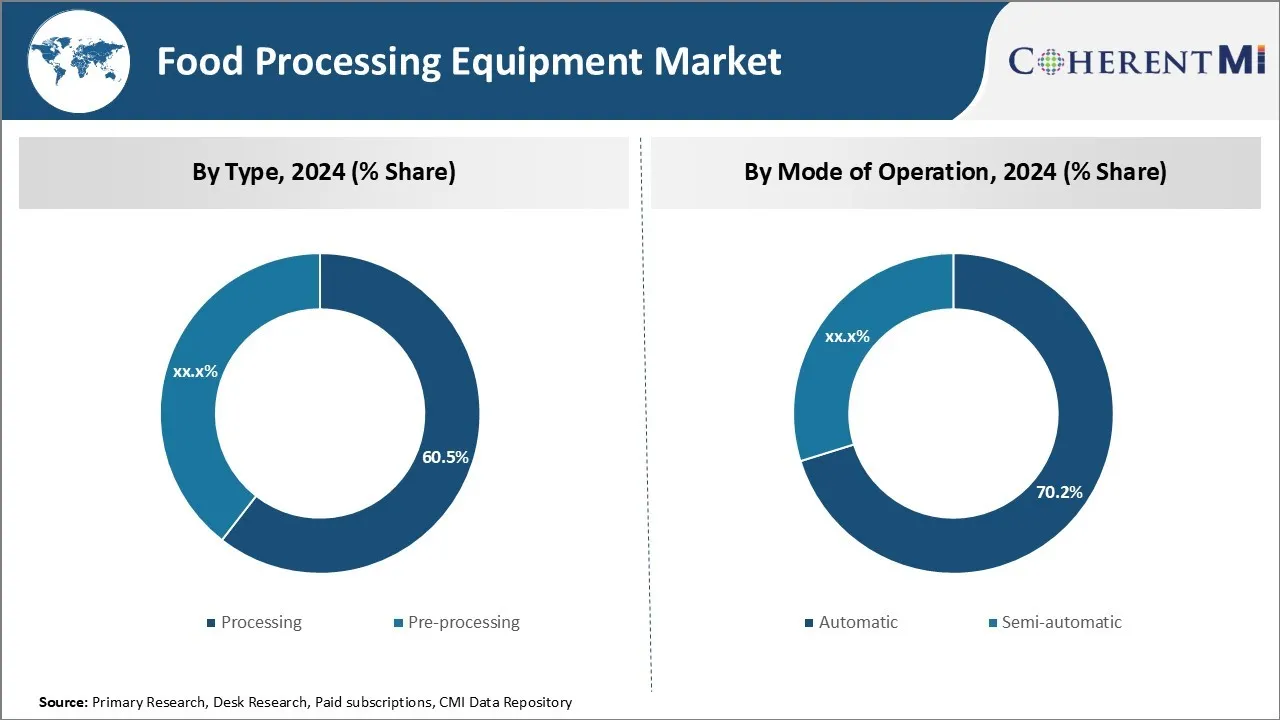Food Processing Equipment Market Trends
Market Driver - Advancements in Technology for More Efficient Processing Systems
As technology continues to evolve at a rapid pace, food processing equipment market players are incorporating cutting edge technologies to develop more efficient systems. Advanced automation, robotics, Internet of Things capabilities, and data analytics are revolutionizing production workflows.
3D printing is enabling customized production of complex machine components on demand. Food producers can experiment with novel designs and quickly iteratively optimize processing equipment. Artificial intelligence and machine learning algorithms also help predict maintenance needs and automate troubleshooting.
Overall, innovative technologies are transforming food processing into highly automated, data-driven and customizable smart factories. They minimize manual inputs yet maximize flexibility to churn diverse product ranges. Real-time processing data also allows customized batches according to dynamic needs of the food processing equipment market.
While initial investments may be substantial, intelligent machines pay for themselves by slashing overhead costs dramatically over the long term. Thereby, advanced mechanization is a major driver sustaining high demand for innovative food processing equipment.
Market Driver - Substitution of Outdated Equipment in Mature Markets
In mature food processing industry hubs, the installed food processing equipment base is increasingly outdated due to years of continuous usage. Old-generation machines involve significant manual labor, suffer from lack of digitization and flexibility, and feature rudimentary safety standards compared to current technologies.
Cross-contamination risks are a serious concern with existing equipment lacking advanced hygienic design and washdown capabilities. Additionally, manual record-keeping makes it difficult to trace products back to their source within the mandated timeframe in case of recalls. At the same time, evolving consumer preferences for customized lower-volume niche products challenge traditional high-volume mass production models.
recent paradigm shift also involves leveraging outsourced co-manufacturing facilities that periodically upgrade their technologies. All these factors are compelling food companies across geographic locations and industry segments to undertake staggered replacement of their infrastructure, driving steady opportunities for food processing equipment market players.

Market Challenge - Rising Energy and Labor Costs Affecting Production Costs
One of the major challenges currently impacting the food processing equipment market is rising energy and labor costs which are negatively affecting production costs. Food processing requires a significant amount of energy to power the various machineries and equipment involved in operations such as cooking, freezing, packaging etc. However, global energy prices have witnessed a consistent rising trend over the past few years driven by factors like increasing demand and constrained supplies.
The food processing equipment market is highly labor intensive with activities like sorting, inspecting and manual packaging accounting for a major portion of the total workforce requirement. The dual burden of rising energy and employee costs has inevitably driven up overall operating expenses for food processing equipment manufacturers.
With margins already under pressure, this poses a serious problem for their long term profitability if not addressed properly with strategies like energy efficiency programs and automation.
Market Opportunity - Technological Advancements: An Opportunity for Market Growth
One key opportunity for continued growth of the food processing equipment market lies in further advancements in automation and robotics. Technological innovations can help food manufacturers reduce their dependence on manual labor for production thereby lowering costs.
Advanced robotics, artificial intelligence, Internet of Things, and related solutions are being increasingly adopted for automation of production and packaging lines. This allows companies to improve efficiencies, maintain quality control, achieve higher output, and flexibility to quickly change product variants.
Furthermore, automation also helps address issues like labor shortages and rising minimum wages. The growing ability of advanced food processing equipment to take over repetitive and hazardous jobs from humans is positively impacting the food processing industry. If leveraged well through focused R&D investments, technological development can drive higher demand for automated solutions in the food processing equipment market.